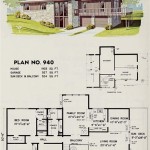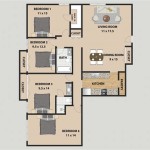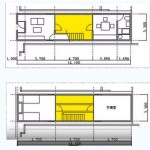How to Design a Floor Plan on Excel
Microsoft Excel, primarily known for its spreadsheet capabilities, can be surprisingly effective for creating basic floor plans. While specialized CAD (Computer-Aided Design) software offers advanced features, Excel presents a readily accessible and user-friendly alternative for individuals seeking a simple, functional floor plan. This article details the process of transforming Excel into a floor plan designer, outlining the steps for setting up the grid, drawing walls, adding elements, and scaling the design for practical use.
Setting Up the Excel Grid for Floor Plan Design
The foundation of any floor plan in Excel lies in configuring the grid. The default Excel grid is not ideal for architectural representation, as the cells are typically rectangular. The primary objective is to create a grid composed of squares, allowing for proportional representation of rooms and features. This is achieved by adjusting the row height and column width.
Start by selecting the entire worksheet. This can be done by clicking the small triangle located at the intersection of the row and column headers. Once selected, right-click on any column header (A, B, C, etc.) and choose “Column Width…” A dialog box will appear. Enter a numerical value for the column width, keeping in mind that this value represents the number of characters that can be displayed in a standard font. A starting point of 2 or 3 is often a good choice. Click "OK."
Next, right-click on any row header (1, 2, 3, etc.) and choose "Row Height..." A similar dialog box will appear. Input a numerical value for the row height, this value specifies the height in points. Experimentation is key here. The aim is to find a row height that visually matches the previously set column width, effectively creating square cells. A value between 15 and 20 points often provides a reasonable square approximation when the column width is set around 2-3. Click "OK."
Once the row height and column width are adjusted, the Excel grid should resemble a series of squares. Zoom level can be adjusted to provide a comfortable viewing scale. The zoom function is usually located in the bottom right corner of the Excel window. Adjusting the zoom level does not affect the actual dimensions of the floor plan, only the visual representation.
Consider setting up guides or reference lines. These can be achieved by highlighting specific rows and columns and applying a border. For example, highlighting every tenth row and column and adding a thicker border can help with visual orientation and measurement within the floor plan. This strategy facilitates the accurate placement of walls and other architectural elements.
Additionally, it is beneficial to label key areas or rooms directly on the grid using text. This immediate annotation enhances the visual clarity of the floor plan and aids in the design process. Choose a clear, readable font size for these labels to ensure they are easily decipherable.
Drawing Walls and Defining Spaces
With a squared grid established, the next step involves drawing the walls of the floor plan. Excel doesn't offer dedicated drawing tools for architectural design; therefore, walls are represented by manipulating cell borders. This technique requires careful application of border styles to create the visual impression of walls.
Begin by outlining the external perimeter of the building. Select the range of cells representing the desired dimensions of the building's exterior. Right-click on the selected cells and choose "Format Cells…" In the "Format Cells" dialog box, navigate to the "Border" tab. Here, users can select the desired line style (thickness and appearance) and color for the border. Choose a sufficiently thick line style to represent the walls clearly. Apply the selected border style to the "Outline" of the selected cells. This creates a closed shape representing the exterior walls of the building.
Internally, walls are created using the same technique. Select the range of cells that correspond to the desired length and position of the internal walls. Apply the same border style as used for the external walls to define the internal room divisions. It is crucial to ensure that the internal walls connect accurately to the external walls to create a cohesive and realistic floor plan.
For doorways and openings, selectively remove segments of the wall borders. Identify the cells corresponding to the location of the door opening. Right-click on these cells, select "Format Cells…", navigate to the "Border" tab, and click on the specific border line (left, right, top, or bottom) that needs to be removed. This action creates a gap in the wall, visually representing a doorway. Repeat this process for all desired doorways and openings throughout the floor plan.
Excel also provides functionality for adding different colors to different areas of the floor plan. Using the fill color option, found in the "Home" tab, the background of each room can be painted unique colors. This improves the visual clarity of the drawing.
When creating walls, it's essential to consider wall thickness. In a real-world scenario, walls have a physical thickness. While Excel doesn't directly support wall thickness, it can be approximated by drawing two parallel lines of borders that are a cell width apart. Doing this will give an approximate thickness to walls.
Adding Elements and Scaling the Design
Beyond walls, a floor plan often includes representations of furniture, appliances, fixtures, and other architectural elements. Excel can accommodate these additions, albeit in a simplified manner. The process involves either using cell shading or inserting simple shapes to represent these elements.
For smaller elements like outlets or light fixtures, specific cells can be shaded with a distinct color. Select the cell representing the location of the element and use the "Fill Color" option (found in the "Home" tab) to apply a specific shade. A legend or key can be added to the floor plan to indicate what each color represents.
For larger elements like furniture or appliances, Excel's "Insert" tab provides access to a range of shapes. Choose a shape that approximates the form of the desired element (e.g., a rectangle for a bed or sofa). Draw the shape on the worksheet and position it within the floor plan. Adjust the size and color of the shape as needed. It may take some experimenting to find the right sizes. The shape can be filled with a color to make it more visible.
Furthermore, consider adding text annotations to these elements. Right-click on the shape and select "Add Text." This allows for labeling the element directly on the floor plan, clarifying its purpose. For example, labeling a rectangular shape as "Bed" eliminates any ambiguity.
Ensuring the floor plan is to scale is crucial for its practical application. This involves assigning a real-world measurement to each cell in the Excel grid. For instance, each cell could represent one foot, one inch, or any other convenient unit. To achieve this, it is useful to add a scale legend or ruler to the drawing. This scale will provide context to any viewers.
To accurately represent the scale, it's helpful to first measure key dimensions of the building or space being planned. These measurements serve as a reference for calibrating the scale of the Excel floor plan. For example, if a wall is known to be 20 feet long, ensure that it occupies 20 cells on the Excel grid, based on the chosen unit of measurement. This consistent scaling guarantees that all elements are proportionally represented within the floor plan, ensuring its practicality for future use.
In conclusion, Excel, although not explicitly designed for architectural planning, presents a workable solution for individuals who need a simple floor plan. While tools such as CAD offer more features, Excel's accessibility and the widespread familiarity with its interface make it a viable choice for basic design tasks. By carefully adjusting the grid, manipulating cell borders, and adding basic elements, the user can create a functional and representational floor plan.

How To Make A Floorplan In Excel Microsoft Tips

How To Create House Plans Elevations In Microsoft Excel Using Verbal Scale

How To Make A Floorplan In Excel Microsoft Tips

How To Draw And Create A Floor Plan In Excel Like Cad Part 2 Live Examples With Addin Link

How To Draw And Create A Floor Plan In Excel Like Cad Part 2 Live Examples With Addin Link

Floor Plan Templates Free Awesome Create For Excel Fa

Use Excel As An Architectural Design Tool

How To Draw And Create A Floor Plan In Excel Like Cad Part 2 Live Examples With Addin Link

How To Make A Floorplan In Excel Microsoft Tips

Iheart Organizing How To Plan A Project Using Microsoft Excel








